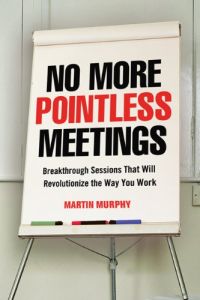Melden Sie sich bei getAbstract an, um die Zusammenfassung zu erhalten.

Melden Sie sich bei getAbstract an, um die Zusammenfassung zu erhalten.
Martin Murphy
No More Pointless Meetings
Breakthrough Sessions That Will Revolutionize the Way You Work
AMACOM, 2013
Was ist drin?
Transform time- and energy-sapping meetings into “workflow sessions” that get the job done.
Recommendation
In conference rooms around the globe, a daily ritual takes place: the meeting – the primary workhorse for getting things done in every business and organization. Yet traditional meetings can suck energy out of the room, creative juices out of the participants and time right off the clock. Management consultant Martin Murphy offers an alternative to mind-numbing meetings: “workflow management sessions.” As he brags on page one: “I can walk into any conference room cold and lead it in a manner that gets more done in a shorter period of time than anyone in the room has ever experienced.” If this provokes your interest, getAbstract suggests giving Murphy’s system a try to see how much is applicable to your firm, or, at least, having a meeting to discuss it.
Summary
About the Author
Management consultant Martin Murphy founded and leads QuantumMeetings.





















Comment on this summary
Is it a leader then or the team?
Should/Could one walk out of a meeting that is not getting enough done, or quickly understand their role and participate accordingly?